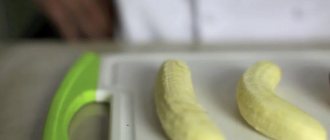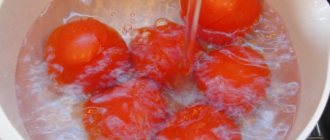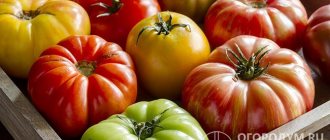Having grown and harvested tomatoes, you want to fully enjoy the result of your labors. However, storing green tomatoes requires a clear understanding of why you are doing it. After all, preserving unripe fruits for a long time, without losing taste, is not easy, since man has not yet fully mastered the mysteries of nature.
When figuring out how to store green tomatoes so that they turn red quickly, and how to delay this process, you will have to delve into complex biochemical reactions.
Purposes of tomato storage
Having collected the crop and delivered it to the place of processing and storage, you need to decide on the following points:
- Should the crop be stored for quick reddening and further processing of tomatoes for the winter, when they can be pickled, pickled, canned, processed into tomato paste, and simply consumed fresh, in salads.
- Either store the tomatoes until the New Year or almost until, but the longer the better.
How to preserve the fruits will depend on which path you choose, so that it is done correctly, competently and with the least loss for the quantity and quality of the product.
Do you know that…
Tomatoes can ripen in a week, or you can stretch out this process for a couple of months. Everything depends on the created conditions.
Optimal conditions for ripening green tomatoes
The rate of ripening of unripe vegetables depends both on the degree of their initial maturity, as well as on the storage conditions and compliance with the temperature regime. There is a common misconception that to quickly change color, fruits need to be placed in direct sunlight. The result of this approach will be a lack of results and accelerated damage to culture.
Experts advise leaving unripe fruits in a dry and dark room with free air circulation. High humidity is one of the reasons for the rapid spread of rot and destruction of the harvested crop.
At what temperature
How to store green tomatoes so that they turn red: for long-term storage (until January), picked vegetables need a stable temperature range of +10 to +12 degrees and humidity within 80-85%. Excessive dry air will lead to wrinkled and flabby fruits. To prevent vegetables from spoiling for a long time, they need to be protected from sunlight.
Experienced gardeners use the following tricks:
- for rapid ripening of tomatoes within 7-10 days - they are left indoors at 20-24 degrees;
- how to make tomatoes turn red faster at home: accelerated ripening, over several days, is achieved by keeping vegetables at +28-30 degrees.
Important! When the ripening process accelerates, a dense area with a yellow-green tint remains around the stalk of vegetables. As a result, the fruits are soft and have a minimum shelf life; they need to be consumed as quickly as possible.
Ripening tomatoes in the right way
Harvesting and sorting
Whatever your goal, the event will be successful if:
- tomatoes are collected in a timely manner, without waiting for the time when frost covers the fruits or they undergo frost treatment;
- vegetables collected are of good quality, not blackened by late blight fungus, not damaged (nailed, crushed);
- A dry day was chosen for collection rather than a wet morning.
Since when harvesting there is no time to examine the degree of ripeness and beauty of the circles, when storing at home you need to pay attention to these parameters.
Sorting by degree of maturity must be carried out, since the biochemical processes that have begun cannot be reversed.
So we have:
- green tomatoes;
- beginning to turn brown;
- brown;
- red.
They need to be sorted and the sooner the better. Use reddened ripe ones for immediate processing; there are many methods for this:
- canning;
- pickling;
- drying;
- freezing;
- processing for tomato products.
Brown tomatoes will be first in line for processing when they turn red.
We recommend reading: Ripe tomatoes: how to keep them fresh and process them for the winter.
Why is it necessary to remove unripe tomatoes?
There are several objective reasons; if they exist, experienced summer residents remove unripe tomatoes from the bushes without further hesitation. The reason is both the unpleasant symptoms of a fungal disease (powdery mildew, late blight) and a large harvest.
When signs of disease appear, formed fruits are collected from the bush, and the plant is treated with a fungicide solution. If the bush overcomes the infection, the remaining ovaries will develop safely and the green tomatoes will ripen.
On a note!
Before storing fruits from a diseased bush, they are washed, immersed in water heated to 60 °C for 3 minutes, and wiped dry.
A healthy bush overloaded with fruits may have branches that break. By removing part of the crop, the summer resident reduces the load on the vines. It's not just ripe tomatoes that need to be picked. Brown, green fruits that have reached medium to large size are also collected.
Prolonged bad weather (rain) can lead to tomatoes cracking and rotting. Preserve the harvest by timely harvesting and proper storage. Don't delay picking tomatoes in August when the nights get cold.
The signal for harvesting is the appearance of the first yellow leaves on the bushes. Fruits picked at the right time are stored longer, do not rot, and ripen well. In cold weather, tomatoes at home will turn red faster than on the bushes.
Varietal features
An important point for conservation is the choice of variety. It is a mistaken belief that any variety can be stored for a long time. Before you set the goal of enjoying your own tomatoes for the New Year holidays, understand the variety of varieties, otherwise you will fail.
An event is doomed to failure if:
- when choosing a variety, you did not pay attention to such an indicator as “keeping quality”;
- the beds have become re-sorted;
- During harvest, tomatoes of different varieties were mixed.
If you don’t know what type of fruit you want to preserve, it’s better not to do this, because a tomato that ripens for a long time is tasteless. Even if it is dense and seemingly beautiful, it has an unpleasant smell, taste and a disgusting aftertaste.
Green tomatoes contain solanine, a poisonous alkaloid that gives them an unpleasant taste. Its concentration decreases after fruit ripening or during culinary processing (pickling, fermentation, salting)
It’s a completely different matter when the tomatoes, set to ripen, ripen quickly, and then are processed into amazing preparations that will decorate any holiday table and prove to everyone that you are an excellent housewife. [flat_ab id=”24"]
Do you know that…
A whole army of breeders is working to create tomatoes that last longer and become tastier, sweeter, and more aromatic over time.
Which tomatoes to choose for storage. Varieties and when to collect?
It is recommended to harvest tomatoes when they are not ripe.
The first mature tomato produced by domestic breeders is Giraffe. The variety has large yellow spherical fruits with a strong skin.
It is recommended to harvest tomatoes when they are not ripe, as they will last up to six months. In order for the fruits to ripen faster, you need to place blanje tomatoes next to them in the box.
Storage varieties:
- Red stone is a dense, medium-sized fruit.
- Decembrist is large (weighs 250 g), the skin is pink.
- Lond keeper - ripe fruits of pearl pink color, stored until the New Year holidays.
- Masterpiece - yellow-orange fruits.
Read more ► How to prepare and preserve green onions for the winter: classic and modern recipes
The specially bred, easy-growing variety New Year's, ripens by winter. The fruit is flat-round, yellow, weighing 100 g; leaf, stipule of unusual shape - large, lobed, externally different from other varieties.
Unripe fruits grown in a greenhouse can be stored for up to six months.
Important! The harvest of mature varieties is harvested late, those grown in a greenhouse - in October-November.
How to store tomatoes so they ripen quickly
There is a direct relationship between temperature indicators and the rate of ripening of tomatoes:
- the warmer it is, the faster the ripening;
- the lower the temperature, the slower the ripening.
Naturally, no one will walk around boxes of tomatoes with a thermometer. Everything is done simply:
- Tomatoes are placed in boxes.
- They cover themselves with a towel, rags, even newspapers, as long as bright sunlight does not fall on them.
- The boxes are installed in a warm (with a temperature of about 20 ° C) room in the house.
Where can I find such a place? The kitchen is where products belong.
Do you know that…
Fruits sent for ripening must be of normal size for their variety. Small and underdeveloped ones will not be able to keep up.
Why tomatoes don’t have time to ripen on the vine
Harvesting green tomatoes is a necessary measure that allows you to save the much-desired harvest. But why do we have to face such a situation every autumn? There may be several reasons for prolonged and untimely ripening:
- Wrong choice of variety. For growing outdoors, you should prefer early-ripening varieties of low- or medium-sized tomatoes. In this case, the plant will not spend a lot of time growing green mass and will form ovaries in a timely manner. Tall varieties of tomatoes can be grown in greenhouses, where optimal temperatures are artificially maintained until mid-autumn.
- Violation of plant care rules. In order for tomatoes to ripen quickly on the root, you need to properly shape the plants by removing the stepsons and pinching the tops. At the end of the fruiting season, it is recommended to feed tomatoes with potassium fertilizers, reducing the amount of nitrogen to a minimum.
- Late planting of seedlings.
- Lack of sunlight. The reason may be caused by bad summer weather and in this case it is almost impossible to correct the situation. It’s another matter when tomatoes grow near tall bushes and trees. In this case, you can facilitate the penetration of sunlight into the tomatoes, which will speed up their ripening.
- Early arrival of autumn cold.
Unfortunately, the farmer can influence only some of the above reasons, but if there is such a possibility, then next year you should definitely try to eliminate past mistakes and be more careful in choosing a variety, growing location, and timing of sowing seeds for seedlings. Perhaps in this case it will be possible to collect a mature harvest in full from the garden.
Important! Ripening of standing tomatoes occurs at a temperature not lower than +150C.
How to keep tomatoes longer
If you still decide to save green tomatoes longer, then:
- keep them in a cool place (temperature around 13 °C);
- constantly sort out and put aside those that are beginning to turn brown;
- periodically select and discard those that have begun to turn black.
Where to store these tomatoes:
- a small amount - in the refrigerator;
- the big one is in the basement.
Do you know that…
Whatever storage method you choose, if the tomatoes turn black, there is no point in storing them any longer. Moreover, such tomatoes should not be processed.
Tips and tricks
It is not recommended to eat unripe tomatoes, as they contain specific enzymes. These substances, once in the human body, can cause poisoning. However, there are many canning recipes that use green tomatoes. In pickles, toxic compounds are neutralized.
If you want to have ripe tomatoes all year round, you can start growing tomatoes at home. Hybrids that do not require intensive care are suitable for this. They can be grown in small pots.
Myths and reality
If you wander around the Internet, you can read a lot, but each line is worth thinking about:
- “To ripen, tomatoes must be covered with a red cloth.” This is probably outright quackery, although if you want to have your own opinion on this matter, then try it. It is advisable, of course, to keep the experiment clean and cover one box with a red rag and the other, for example, with a green one. And please share your research results in the comments.
- Mustard powder also does not help ripening. If the tomatoes have turned black, it won’t help either.
But it’s true that when you add a ripe apple or one that’s starting to rot to green tomatoes, unripe tomatoes ripen faster.
To speed up ripening, you can also add overripe bananas or pears to green tomatoes.
Do you know what ripe fruits smell like? That's right - delicious. They smell like ethylene with aromatic substances. The riper the fruit, the more gas it releases and contributes to the redness of its neighbors.
Do you know that…
At the beginning of the last century (1936), a work was published at the Peterhof Biological Institute on the effect of ethanol (medicinal alcohol) on stored tomatoes. So, when 0.2 ml of vodka was introduced into the pulp of a tomato, first the injection site began to turn red, and then the fruit itself, and evenly. This did not affect the taste.
Ripening of “drunk” tomatoes takes place 10-12 days earlier than “sober” ones. Another interesting fact is that “drunken” tomatoes produce seeds with excellent seedlings.
Where to store
There are several options for storing green tomato harvests. They can be used in apartments, cottages, and country houses.
Boxes
The material of the container is not important. Cardboard, plastic, and wooden boxes are suitable. The bottom must be covered with several layers of newspapers. Place the tomatoes in layers, each covered with a layer of paper. You can use dry straw if the crop will be stored in a utility room.
Deep drawers are not needed. One should hold no more than 12 kg. Part of the tomato will choke if you put more than 3 layers in a container. The storage location must be easily accessible. Every 3-4 days it is necessary to check the condition of the fruits and select:
- ripe;
- brown;
- rotten.
Tomatoes starting to turn brown should be placed in a separate box. This will slow down the ripening process of green tomatoes and extend the period of their consumption.
Packages
In an apartment, it is convenient to store green tomatoes in paper bags. The fruits can be wiped with a rag soaked in vodka. The absence of infection will extend the storage period. At a temperature of 18-20 °C, the fruits will turn red after 2 weeks; if the room temperature is not higher than 15 °C, the ripening time will increase to 4 weeks.
In the cellar, tomatoes can be stored in plastic bags. There is no need to tie them. The air should circulate freely. It is better to hang the bags. The temperature in the cellar is low, so the tomatoes will ripen slowly. If necessary, the package can be brought into the room. In a warm room they will quickly turn red.
Banks
If you have glass jars, green tomatoes can be ripened in them. Convenient to store in a 3 liter container with a wide neck. The filled container should be closed with a lid and placed in a closet or other dark place.
To speed up ripening, put a banana or a couple of red tomatoes in the jar. The condition of the fruits must be monitored and removed if signs of spoilage appear. At room temperature, tomatoes in jars ripen in 10 days.
Ripe tomatoes can also be stored in a jar. It must be sterilized in a microwave, oven or steam. Wash the selected fruits, wipe dry and place in a prepared container. Prepare the lid, pour 3 tbsp into the jar. l alcohol, set it on fire, close the lid. There will be no oxygen in the jar due to combustion; ripe tomatoes are stored longer in a vacuum.
Fridge
Both ripe and green tomatoes are stored in the vegetable compartment of the refrigerator. For long-term storage they are placed in bags. The fruits are pre-wiped dry. There should be no condensation in the plastic bag.
Ripe tomatoes can be frozen. Cherries and small cream are frozen whole, and large-fruited varieties are cut into slices (circles, quarters, cubes). You can use frozen tomatoes when preparing pizza, meat and vegetable stews, pilaf, and borscht.
Tomato processing
If it is not possible to keep tomatoes fresh for a long time at home, they are processed. Recipes for all kinds of preparations can be found for both red and brown and green tomatoes.
Preparing tomatoes for the winter using a proven recipe is not difficult. Or you can experiment and dry it, roll it with mustard, and process it into sauces and salads.
Try preparing a very tasty salad for the winter using the recipe from this video:
Many factors influence how to store tomatoes at home. However, you will be able to extend the shelf life of this wonderful vegetable and enjoy eating it in fresh and processed form.
Store correctly and be healthy!
Ways to accelerate the ripening of tomatoes on branches
If the weather is not yet expected to worsen, you can try to speed up ripening on the branches. Practitioners have noticed that if you pick ripe fruits from a plant, their taste will be better than vegetables picked green and ripened at home.
The main task is to mobilize all the plant’s resources so that the tomatoes ripen more actively.
What you can do:
- Tear off the new color and buds.
- Trim or pinch the top of large bushes.
- Remove lower plants from all flower clusters that have not yet begun to develop into fruit.
- Remove all leaves from below and new shoots.
- If possible, turn all the branches towards the sun.
- Apply 1-2 irrigations to existing leaves with iodine solution, no more than 40 drops per large bucket of water.
- Lightly pull the tomato bush out of the ground to reduce its nutrition.
- To prevent late blight from catching up with the plants, you can spray the bushes with garlic infusion in clear, warm weather. In open-air garden beds, it is permissible to cover with film.
- Stop watering.
- Actively remove slightly reddened tomatoes, which will ripen perfectly in the apartment.
- Contacts with ripe tomatoes are effective. If you put a bag on each green cluster, put a ripe tomato in it, and tie it, 3 days after removing the “structure” the green fruits will actively begin to ripen. In the same way, a red tomato will affect its “neighbors” in a box , bag or any other container.
- You can speed up the ripening process if you store the bushes under the shelter of a barn or attic: pull out the plants with roots, shake off the soil and hang the “thickets” upside down.
To preserve fruits from open ground, it is not advisable to remove them later than mid-August. Everything needs to be collected, sorted and stored. It is advisable not to lay out those that fall off on their own for long-term ripening. Arrange all fruits for storage until night temperatures drop to 13 degrees Celsius.
What you need to keep fresh tomatoes for a long time
Correct collection
Do you have a wine cellar? What a score! It would be more correct to say that the tomatoes are lucky, because they will feel at home there. What about wine, you ask? What about wine? The wine will have to make room a little. But in winter you will always have not only something to drink, but also something to snack on!
But seriously, a wine cellar temperature of 10-14°C is exactly what most tomatoes need for long-term storage. The closer the temperature is to the ideal (see table above), the longer you will be able to see fresh tomatoes on your table.
If you want to extend the shelf life of ripe tomatoes, use the following method:
- Wipe the selected fruits with alcohol or a solution of potassium permanganate and let them dry completely.
- Take a plastic or wooden box with holes. Slots are necessary for good ventilation. Cover the bottom of the container with any material that absorbs moisture. This can be parchment, burlap, straw or plain paper. The ideal option is peat or dried sphagnum moss.
- Arrange the tomatoes in one layer. Sprinkle them with sawdust, straw or cover with another layer of paper. Place a maximum of one more layer of fruit.
- Cover the whole thing again with sawdust and store it in a cool room with good ventilation.
White and green tomatoes can be stored until mid-winter under the right conditions.
- Disinfect all fruits with alcohol and let them dry.
- Wrap each tomato in dark paper to protect it from light. Place all the fruits in one layer so that they do not touch each other.
- Cover the top of the box with straw and leave it for storage in a ventilated area with a temperature of 8-10°C.
By the New Year, you will have your own ripened tomatoes on your table. If you want to enjoy them earlier, just move the box to a warm place and place it closer to the light. And also put 1-2 ripe fruits there.
It is more difficult to preserve the tomato harvest in an apartment for a long time, but it is also possible. What places are suitable for storage:
- Loggia. On a glazed loggia or balcony, the temperature, depending on the weather, can fluctuate from 10°C and above. Tomatoes should like these conditions. Just remember to protect them from the sun, which speeds up the ripening of the fruit.
- Floor under the bed. Not 10°C, like on the loggia, but still cooler than in the kitchen cabinets.
- Under the bathroom. However, with this storage method, monitor the humidity level and ventilate the bathroom more often.
Those with a cool, dark pantry are especially lucky. Tomatoes will feel quite comfortable on the lower shelves or on the floor. Not a wine cellar, of course, but better than in other places.
Storing fresh tomatoes for the winter
To find out how to store tomatoes at home for the winter, consider the methods of storing them:
- In mustard. The vegetables are washed and dried and placed in three-liter jars, sprinkling each layer with mustard powder. The tomatoes are stacked neatly and not tightly, avoiding damage to the fruit. The jar is rolled up with a lid and put away in the basement or other cool place.
- In alcohol. The fruits are placed in a sterilized jar, two tablespoons of alcohol are added. Using a wick, the tomatoes are set on fire and covered with a lid. The can rolls up.
- On paper. The fruits are washed, dried, and treated with a cloth soaked in an alcohol solution. Each tomato is wrapped in a paper sheet and placed in a box or in the refrigerator. The main condition should be dryness of the paper. Therefore, it is necessary to frequently inspect the vegetable and change the paper once a week. Then the fruits can last for a long time. With this method, green, unripe tomatoes can last until winter, and sometimes until spring.
- In sawdust. For this purpose, unripe fruits are used, which are placed in wooden boxes in rows, tail up. Place paper on each layer of tomato and sprinkle with sawdust. The boxes are placed in a cellar, basement and other storage areas, with a temperature no higher than 10 degrees Celsius.
- In the freezer. A very good way to preserve vegetables is to freeze them. This product can be used in cooking for stewing and frying. For freezing, hard, ripe fruits are used, which are pre-washed and dried. Then the vegetable must be cut into the desired type of cut and placed in cling film or a container.
- Drying. This method is not suitable for all types of tomato. For this purpose, fleshy vegetables with a small amount of seeds are used. The fruits are cut in half, seeds and liquid are removed. The halves are salted and laid out on a flat surface, cut sides down. After 30 minutes, place in the oven for 4 hours at a temperature of 90 degrees. For long-term storage of sun-dried tomato, it is placed in a jar and filled with vegetable oil. This can extend the period to six months.
- Canning. There are a huge number of preservation methods that allow green and red tomatoes to be stored for a long time. You can get pickled, salted, barrel, pickled tomatoes with a shelf life of a year or more. Canning is carried out in various containers: jars, barrels, tubs.











